The Teacher's Guide to Service Learning [+ 5 Examples]
All Posts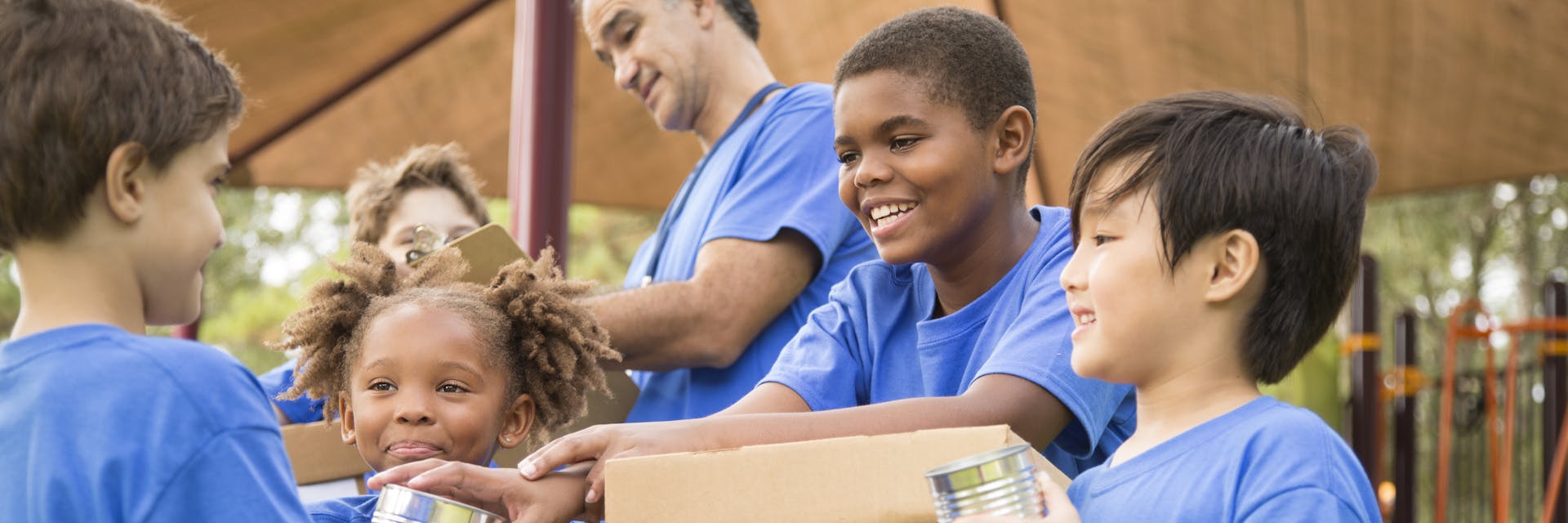
Involving your students in community service can feel like an impossible task when you already have endless piles of curriculum to cover during the school year.
But what if you could accomplish both of these at the same time?
You’ve probably heard of service learning, a form of experiential education widely implemented in elementary classrooms right through to high schools and higher education. Maybe you’ve even wanted to use it in your classroom, but aren’t exactly sure what it is or how to go about it.
When done properly, service learning is a fantastic form of experiential learning the whole class can enjoy. Including service learning projects in your curriculum encourages students to learn about relevant issues, get involved in community service and engage with academic content — all at the same time!
Let’s start with the basics.
What is service learning?
According to the National Youth Leadership Council, it’s "a philosophy, pedagogy, and model for community development that is used as an instructional strategy to meet learning goals and/or content standards.”
In simpler terms, service learning is an educational method that combines academic goals with community service projects. Lessons about relevant community issues are combined with existing course content to optimize the academic experience.
At the same time, students gain hands-on experience doing service projects to tackle community issues and make positive changes.
The beauty of service learning is that something real and concrete is occurring. Learning takes on a new dimension. When students are engaged intellectually and emotionally with a topic, they can light up with a revelation or make a connection between two previously separate ideas. What they’ve learned in school suddenly matters and engages their minds and their hearts. Cathryn Berger Kaye, M.A. Author of The Complete Guide to Service Learning
Teachers can provide real-world examples of the curriculum they’re teaching. Students are given a fresh perspective on what they’re learning and can apply it to the projects they work on.
Entire classrooms make positive changes to the community, and everyone reaps the rewards.
How is service learning different from community service?
It’s great to get children involved in community service as soon as possible, but service learning adds an extra layer to make it even more beneficial for students.
Service learning is a more student-centered approach than other forms of community service, such as volunteering. The focus is on student experiences, and the entire service project is designed around providing as much education as possible every step of the way.
Most kinds of community service help the community more than the person providing it, but the benefit is reciprocal with service learning. Students and members of the community can both be equally satisfied.
What are the benefits of service learning?
Sure, it sounds good, but at this point you may be wondering, “can this really benefit my students?”
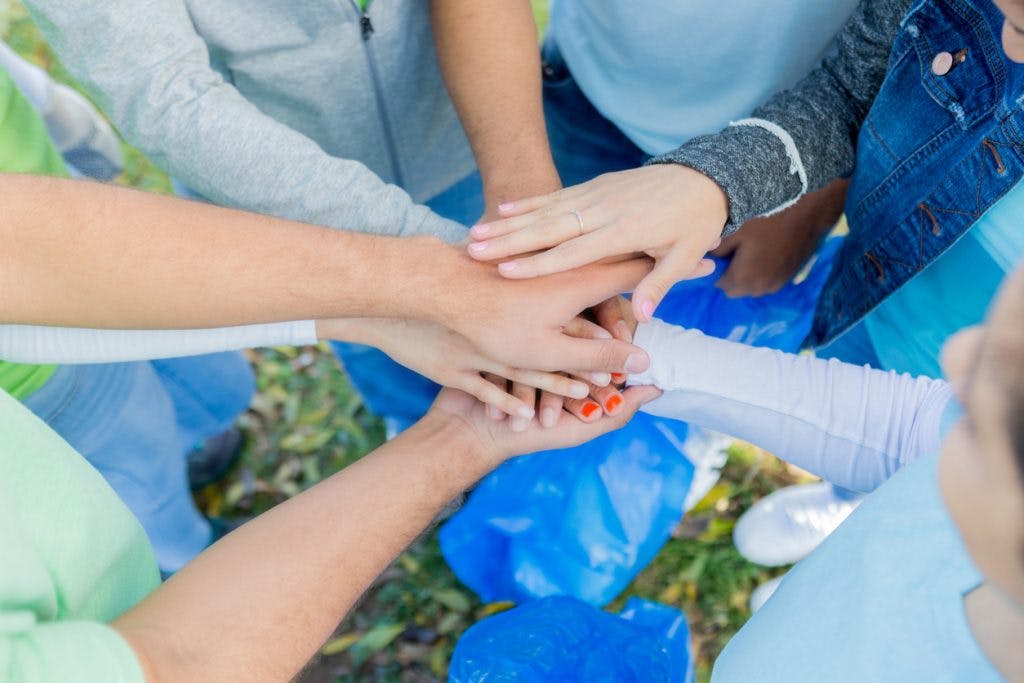
The simple answer: yes, it can! There are many proven benefits of adding service learning to your curriculum. Research from the University of South Alabama found that around 80% of students who took part in a service learning project found the experience “highly beneficial.” These students saw improvements in their communication skills, self-awareness and knowledge of community needs, making it an effective service-learning strategy.
In another study, service learning programs improved the grade-point averages of students 76% of the time. Students in the program were more engaged, punctual and interested in course content.
In addition to the above findings, service learning can:
- Help students make connections between different academic subjects by using an interdisciplinary teaching approach
- Encourage students to positively contribute to their communities, while also aligning to class curriculum
- Improve learning outcomes, attendance rates and class engagement
- Increase awareness of community needs and local or global issues
- Improve problem-solving ability, including in real-life skills
- Boost levels of self-esteem, empathy and responsibility
- Reduce the risk of behavioral problems in the classroom
- Allow for a hands-on learning experience
- Promote mutual respect and kindness
- Strengthen classroom communication
- Deepen critical thinking skills
The ideas and examples of service-learning provided below will help you bring it to your classroom and see many of these benefits come to life for your students.
What does service learning look like?
An effective service-learning experience follows a specific format so education can occur throughout the entire process. Creating a detailed plan for each step of the way will make it easy to introduce your program and keep students engaged, while meeting basic standards to ensure success.
The general guidelines for a service-learning course or program include:
- Preparation — This is the stage where you prepare yourself and your students to take on their service project. You can start by deciding on a project to tackle, figuring out how to tie it in with your curriculum, and forming community partnerships with local organizations your class can work with. Then you can teach your students about the community issue to prepare them for action. Make sure you choose a project that is relevant to your community.
Tip: Give your students a voice during this stage to keep them interested. For example, you can have the class vote on which community issue they want to support or on individual roles within the project. - Action — This is the hands-on component where the class gets to use what they’ve learned and apply it to a real service project. Students will now directly help community partners and those affected by the issue with actual community service work.
- Reflection — This stage lets students reflect on their service project, consider what they learned from it, and apply their learnings to the curriculum. Reflection is encouraged during every step, but this stage allows for a more in-depth process where students can consider what they’ve learned and how they feel about the service they provided.
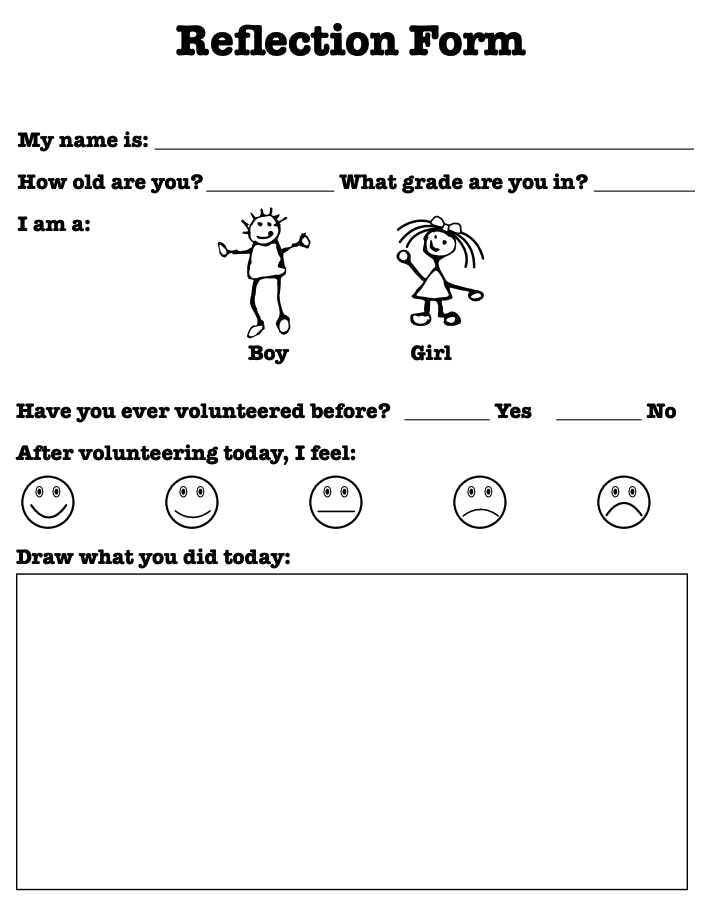
Example of a reflection worksheet for younger grades. Image source: Scholastic
- Demonstration — Students can show what they’ve learned about the issue to their class, school or community. This is an opportunity to raise awareness of the issue and what others can do to help.
- Celebration — Students can congratulate themselves and each other for their hard work and positive contributions.
There are a number of things you can do with your students throughout the program. Below are some ideas you can use for each stage of your service learning plan.
Preparation: Students can learn about the issue they are going to tackle using:
- Class and small group discussions
- Visual brainstorming sessions
- Web-based research
- News clippings
- Infographics
- Videos
- Books
Action: Students can serve their communities by taking part in:
- Various service projects (cleaning, building, gardening etc.)
- Awareness campaigns
- Research projects
- Tutoring sessions
- Fundraisers
- Field trips
- Events
- Crafts
Reflection: Students can reflect on their experiences with:
- Visual art submissions
- Group discussions
- Poems or songs
- Journal entries
- Worksheets
- Blog posts
- Essays
- Videos
Demonstration: Students can demonstrate what they’ve learned about the issue by creating:
- Final presentations
- Books or portfolios
- Graphs or charts
- Infographics
- Slideshows
- Videos
- Skits
Celebration: Students can celebrate their hard work and success by:
- Making thank-you cards or gifts for peers and community partners
- Being recognized at the next school assembly or on social media
- Discussing the impact their efforts have made
- Having a class pizza party
The possibilities are endless when making a service learning plan, so feel free to get as creative as you like. Just remember: a successful service learning program allows for cooperative learning and encourages constant communication and reflection.
Possibly the most important part of your plan is choosing an actual service project to take on. Get inspired by the examples below.
Five service learning examples for your classroom
When picking your service learning project, be sure to focus on an issue that’s relevant to your community members. It’s also important to ensure that necessary material can be embedded into your student learning.
Below are five examples of projects you can use in your class, including some ideas for literature to accompany your lessons. Use them as a guide when designing your own plan.
1) Issue: literacy
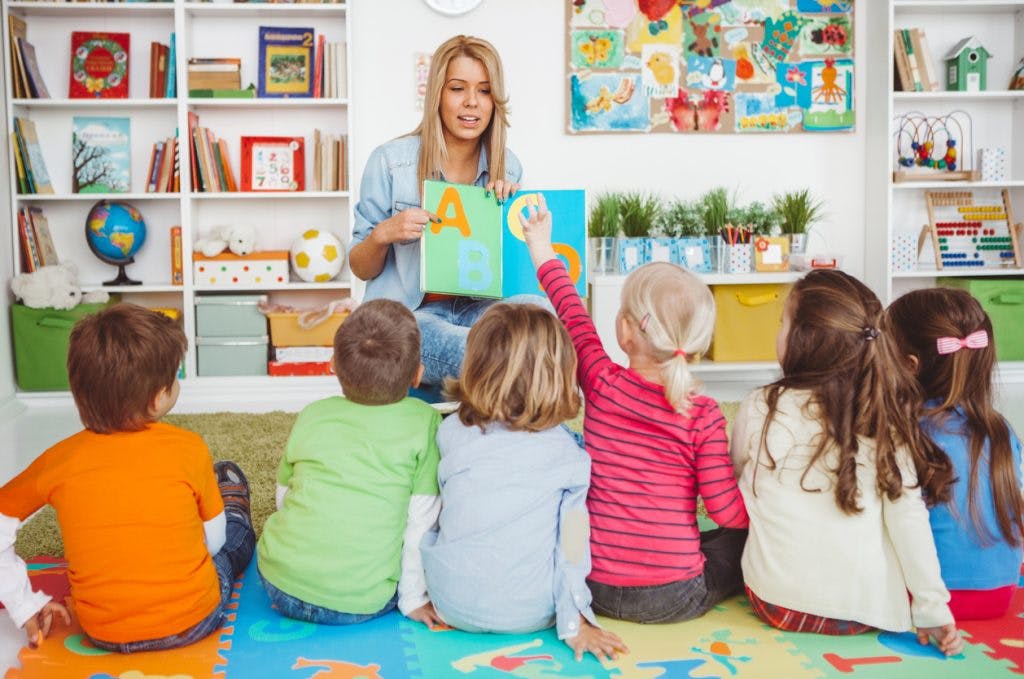
Action: Collect books to donate to low income schools or (for older grades) tutor younger students to read. Partner with a local community organization that supports literacy in youth. Local libraries are often great starting points for community engagement in literacy.
Preparation: Teach learners about the importance of literacy and the implications of low literacy rates for the individual and the community.
Books you can use:
- Read Me a Book by Barbara Reid
- The Library Card by Jerry Spinelli
2) Issue: animal welfare
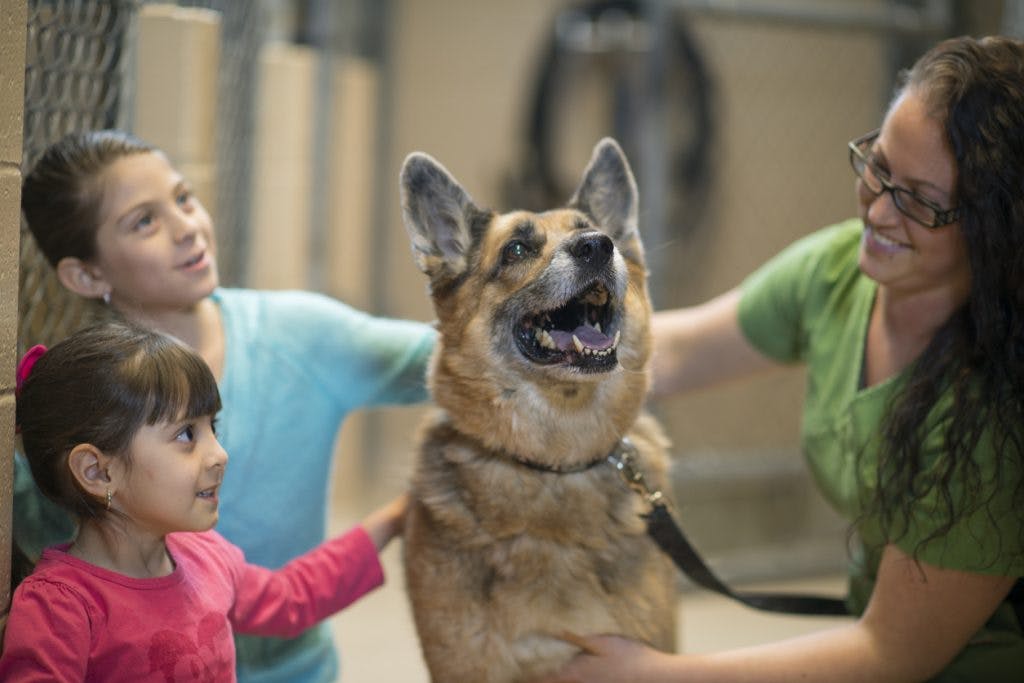
Action: Collect pet food and toys for animals at your local humane society, then take a class trip to deliver the items and visit the animals.
Preparation: Teach students about shelters, adoption, rehabilitation and how to prevent animal cruelty. Ask them to brainstorm what providing meaningful service to animals could involve.
Books you can use:
- Can I Be Your Dog? By Troy Cummings
- Saving Winslow by Sharon Creech
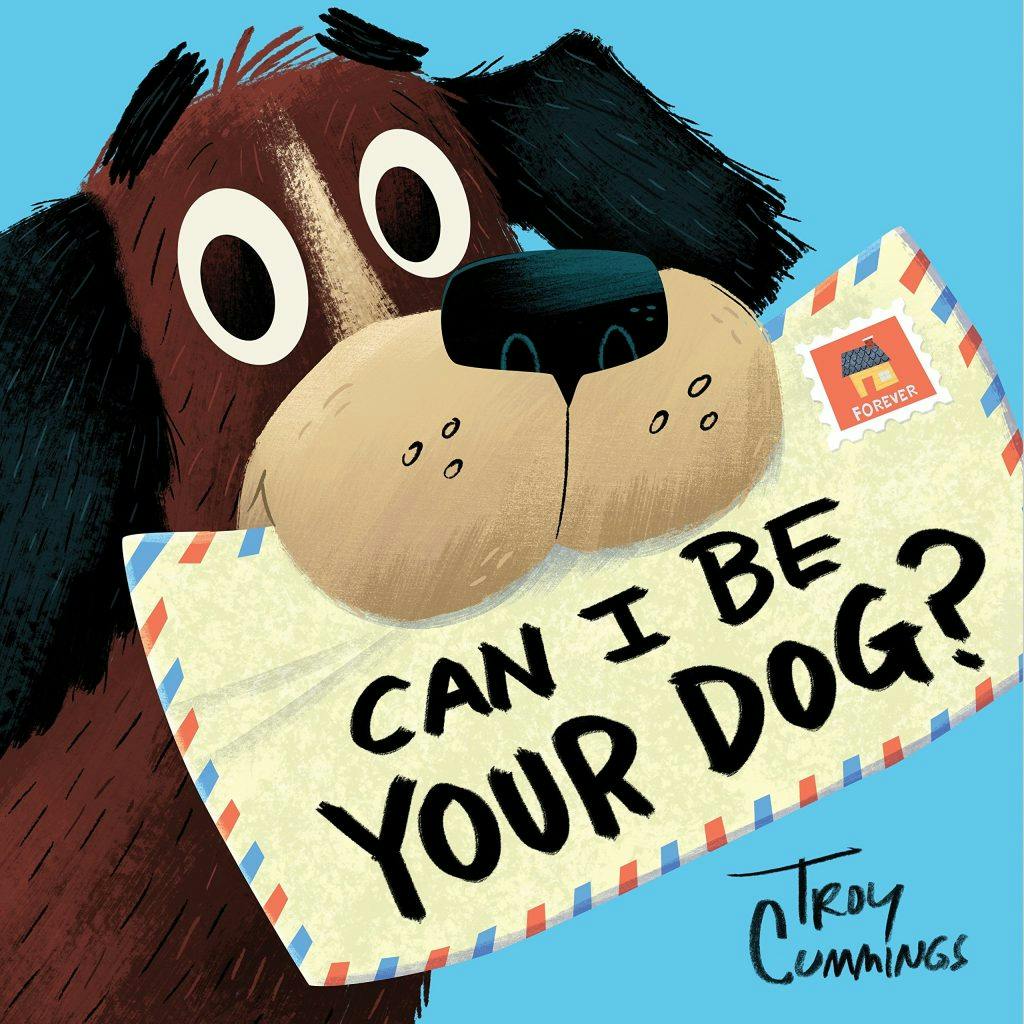
This picture book is written in letters from Arfy the dog, hoping he will persuade someone to adopt him. Great for younger grades to help them understand the importance of pet adoption.
3) Issue: poverty and hunger
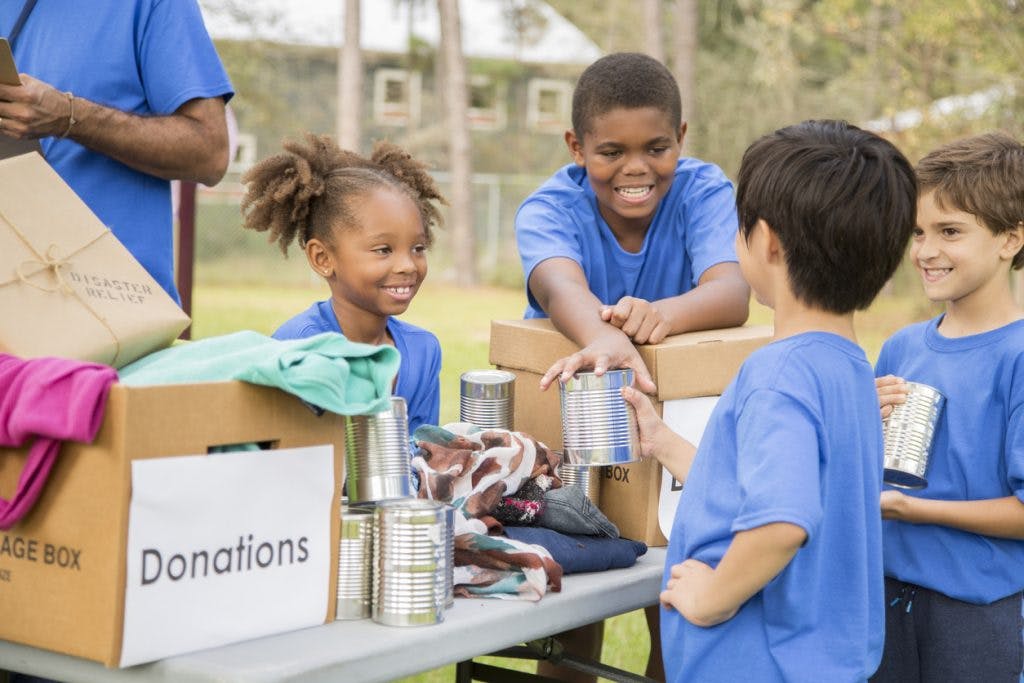
Action: Hold a canned food drive or collect items to make care packages for the homeless. Enroll your class into helping a local organization that works to combat poverty.
Preparation: Teach students about hunger and poverty in their community and its negative effects on child development and health. Talk about what others can do to help.
Books you can use:
- Uncle Willie and the Soup Kitchen by DyAnne DiSalvo-Ryan
- Maddi’s Fridge by Lois Brandt
4) Issue: the environment
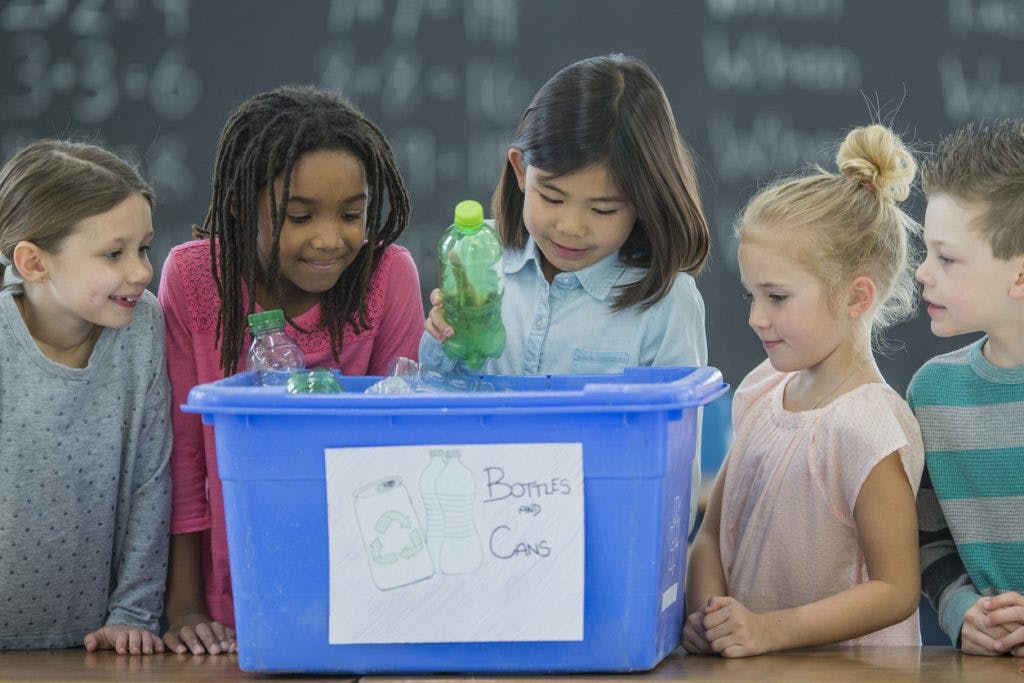
Action: Work to improve recycling efforts at school. Educate staff and students about what can and can’t be recycled. Make quick reference posters. Collect bins from classrooms.
Preparation: Talk about advocacy on environmental issues and their relationship with civic responsibility. Discuss the impact waste has on the earth and ways you can help the environment through actions and advocacy. Teach students the importance of “reduce, reuse, recycle,” why recycling is effective and how it benefits the environment. Motivate them on how young people can help shape the future for the better.
Books you can use:
- The Wartville Wizard by Don Madden
- Me and Marvin Gardens by A. S. King

This book tells the story of Obe Devlin, a boy who makes an unlikely friendship after his land is taken over by developers. It includes a heartwarming tale while bringing attention to environmental issues. Good for middle grades.
5) Issue: diversity and inclusion
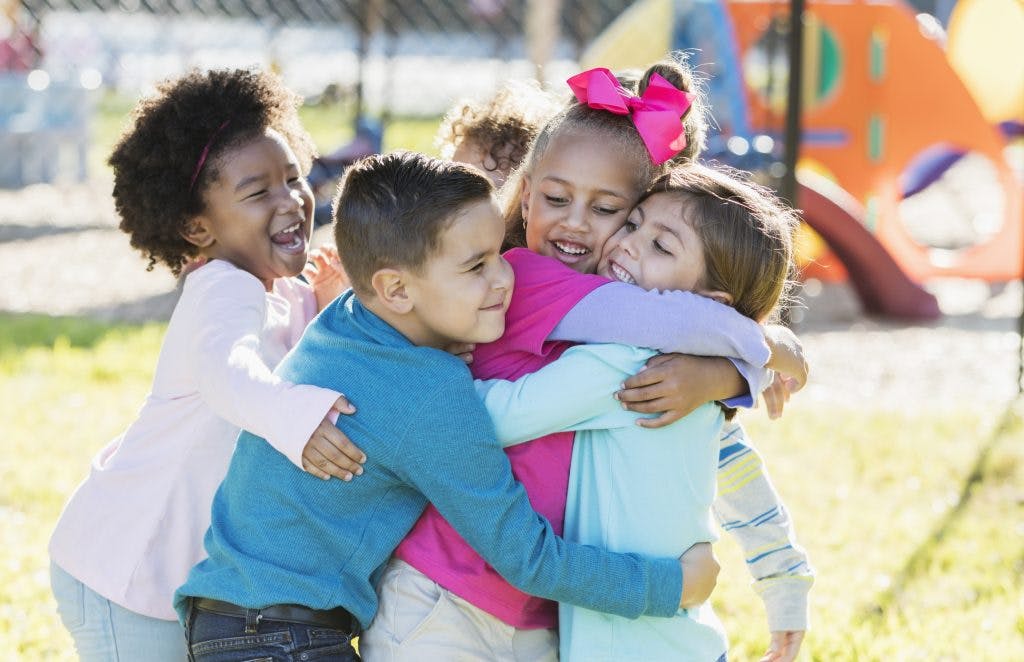
Action: Have the class plan and host a “celebrate diversity” day at school, to educate each other on different cultures or groups that face adversities like those with disabilities. Encourage students to embrace differences among their class. Partner with a local organization that promotes diversity and inclusion.
Preparation: Teach students about inequality. Define and explain the importance of diversity and tolerance. Explore ways students can support diversity in their everyday lives or through service activities.
Books you can use:
- All Are Welcome by Alexandra Penfold
- Fish in a Tree by Lynda Mullaly Hunt
Final thoughts on service learning
No matter what project you choose, service learning is a great way to accomplish academic goals, promote teamwork and communication and contribute to a positive school culture by inspiring students to give back.
You now have the necessary tools to bring service learning to your class. Use these ideas to plan a service learning program tailored to your curriculum, and enjoy the awesome results.
Create or log in to your teacher account on Prodigy – a fun and engaging game-based learning platform that assesses student progress and performance as they play. Aligned with curricula across the English-speaking world, it’s been used by more than a million teachers and 100 million students.



